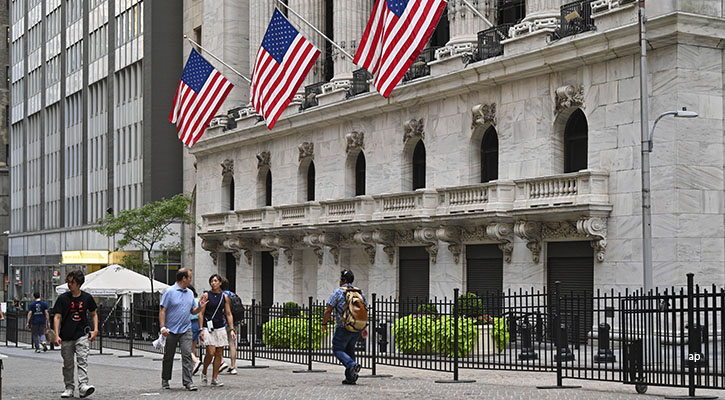In “The Evolution of Emerging Markets”, we discussed the past, present and future of the composition and drivers of emerging-markets stocks. One of the more noteworthy developments Ben highlighted is China’s rise to prominence among emerging stock markets. When Chinese stocks were first included in the MSCI Emerging Markets Index in September 1996, they accounted for just 0.46% of the benchmark’s value. As of March 2018, Chinese stocks made up 29.9% of the index’s total market capitalization. Here, I will explore how the Chinese market has changed in the past 20-plus years.
Track Record: Strong Performance, Gut-Wrenching Volatility
The MSCI China Index was launched on 31 October 1995, some 7 years after the launch of the MSCI Emerging Markets Index. From March 2001 through the end of March 2018, the MSCI China Index generated annualized total returns of 12.2% versus 6.0% for the MSCI World Index—a measure of the performance of developed-markets stocks. Over that same span, the MSCI Emerging Markets index gained 10.7% annually. As illustrated in Exhibit 1, beginning in mid-2003, the performance of the MSCI China Index started to deviate positively from the MSCI World Index. Chinese stocks’ cumulative relative returns versus developed-markets stocks peaked in 2007, just prior to the global financial crisis. This was followed by a sharp drawdown and, subsequently, an extended period of underperformance that ended around mid-2014. More recently, Chinese stocks have been strong relative performers. In 2017, the MSCI China Index surged 54.1% while the MSCI World Index advanced 22.4%.
-01.png)
Chinese stocks’ strong absolute and relative performance has come with a heaping helping of volatility. The MSCI China Index has experienced much greater volatility (as measured by the standard deviation of its monthly returns) than the MSCI World Index. In Exhibit 2 I’ve plotted the annualized returns and standard deviations of the MSCI China, MSCI Emerging Markets, and MSCI World Indexes for the 15-year period ending 31 March 2018. Over this span, the MSCI China Index experienced an annualised standard deviation of 25.7% with an annualised return of 16.3%. The MSCI World’s annualised standard deviation was almost half of that of the MSCI China Index, at 14.5%, while the benchmark generated an annualised return of 9.2%.
-02.png)
Changes in Definition and Composition
China was not included in the MSCI Emerging Markets Index when it incepted in January 1988, nor did MSCI recognize it as a standalone country at that time. Back then Malaysia was the country with the highest weighting in the index, at 33.8%.
On 3 September 1996, China was added to the MSCI Emerging Markets Index at a weight of 0.46%. This was negligible in the context of the emerging-markets benchmark and even more so within the MSCI All-Country World Index. Over the past two-plus decades, the definition and composition of the Chinese stock market has changed dramatically. In the early days, the market was made up of a number of B-Shares and H-Shares. Eventually, more Chinese red-chips and H-Shares were added to the mix as they listed their shares in Hong Kong in the early 2000’s. Most recently, U.S.-listed ADRs were included in MSCI’s index in November 2015.
As of March 2018, China’s weighting in the MSCI EM Index had increased to 29.9%. This is significantly greater than the next three largest countries included in the benchmark: South Korea (15.1%), Taiwan (11.8%), and India (8.1%).
-03.png)
-04.png)
Exhibit 5 shows the changes among the top 5 constituents of the MSCI China Index every five years over the past two decades. Exhibit 6 shows the change in the index’s sector weightings over the past 10 years. These changes are attributable to a combination of: 1.) changes to the index’s inclusion rules; 2.) new listings and IPOs being added to the index; and 3.) the structural transformation of the Chinese economy. In exhibit 6, we can see that the information technology sector went from representing just 2% of the index in 2007 to becoming its largest sector by the end of March 2018—making up 41% of the benchmark’s value. Meanwhile the telecommunication sector has shriveled from 21% to 4% of the index’s value. This is, in part, evidence of the diminishing footprint of the traditional telecommunication industry and the rise of newer and more innovative communication, commerce, and entertainment platforms. Most notably, it reflects the emergence of a pair of tech giants – Tencent Holdings (00700, listed in Hong Kong) and Alibaba Group (BABA, listed in the U.S.).
Tencent Holdings was the first internet company to list on the Stock Exchange of Hong Kong, when it made its debut in June 2004. It was added to the MSCI Hong Kong Index in May 2007 and subsequently transitioned to the MSCI China Index in May 2008. During the roughly 10 years that Tencent has been a member of the MSCI China Index, it’s total market capitalisation has risen 174-fold, from US$3 billion to US$525 billion. Its weighting within the MSCI China Index has increased from just under 2% at the time of its inclusion to 18% as of end-March 2018. The other tech giant, Alibaba, listed on the New York Stock Exchange in September 2014. Despite Alibaba’s size (US$168 billion market capitalisation at IPO), it was not initially included in the MSCI China Index. In November 2015, MSCI decided to include foreign listings of Chinese companies in the index. This decision resulted in the U.S. listed ADRs (e.g. Alibaba, Baidu, Ctrip, JD.com, etc.) being added into the MSCI China Index. These stocks accounted for around 20% of the index upon the completion of a two-phase inclusion process. This also led to some significant changes to the sector composition of the index, most notably an increase in the weighting of the technology sector.
In addition to the expansion of the tech sector, we have also seen the consumer staples and consumer discretionary sectors expand their share of the benchmark’s value from 6% to 11%. This has been driven by growth in the consumer discretionary sector which, in turn, is linked to the Chinese domestic consumption growth story.
-05.png)
-06.png)
In part 2 of this article, we will take a look at what the future of the Chinese equity market might hold.

















